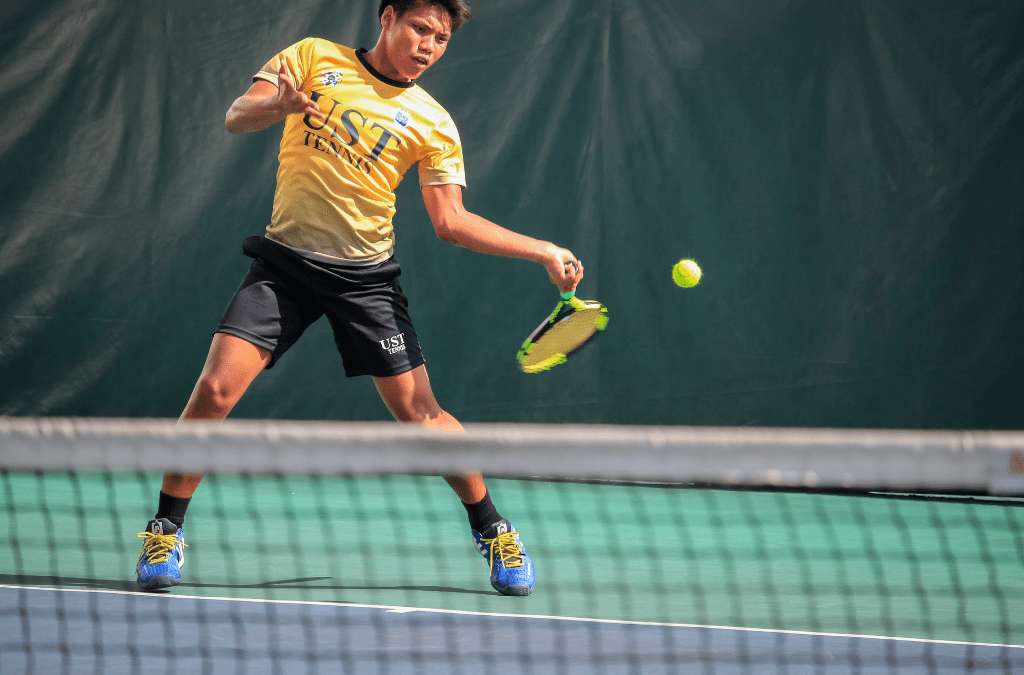If you’ve ever picked up a tennis racket, you know that tennis is far more than just a mental game. From repeated serving to rapid sprints and pivots, the sport challenges your entire body. But rather than let potential injuries keep you off the court, you can stay one step ahead by learning what these injuries are, how to prevent them, and where to turn if they occur.
Common Tennis Injuries
Tennis is a sport where the physical challenges vary from the high-intensity sprints across the court to the repeated swinging of the racket. Over time, these actions can lead to both acute injuries, resulting from a single, sudden event, and overuse injuries that develop gradually.
Shoulder Injuries:
The shoulder is one of the most critical joints in tennis. The sport’s unique blend of overhead serves and rapid, forceful swings can push this joint to its limits. Repeated overhead movements may lead to a range of shoulder injuries, including:
Labral Tears: These occur when the cartilage that stabilizes the shoulder joint gets torn. Labral injuries often result from overuse or sudden trauma, causing pain and instability.
Rotator Cuff Tendinopathy: This condition is characterized by the gradual wearing down of the tendons due to repetitive stress. Over time, the cumulative impact can lead to chronic pain and reduced range of motion.
Shoulder Impingement: Here, the shoulder tendons become compressed against the surrounding bones during certain movements, causing discomfort and inflammation. What many players might not realize is that the root of these injuries often lies in a lack of balanced strength. When the shoulder compensates for weak muscles in the core or back, it becomes more susceptible to injury.
Elbow Injuries: Tennis and Golfer’s Elbow
The repetitive nature of tennis swings puts a significant strain on the elbow. While the term “tennis elbow” is widely recognized, it’s important to note that injuries can also affect the inner part of the elbow, sometimes referred to as golfer’s elbow. In both cases, overuse results in chronic inflammation of the tendons that extend from the elbow to the forearm. Players may experience pain, weakness, and limited movement, which can hamper performance and even lead to longer recovery periods if left unchecked.
Wrist Injuries: Handling the Racket
A firm grip is essential for controlling a tennis racket, but too tight a grip or improper technique can cause serious wrist problems. Common issues include:
Carpal Tunnel Syndrome: This happens when the nerve running through the wrist becomes compressed, leading to numbness, tingling, or even weakness in the hand.
Tendonitis or Tendinopathy: Overuse of the wrist muscles can cause inflammation or degeneration of the tendons, resulting in discomfort that can persist long after a match.
Wrist Sprains: These injuries occur when ligaments in the wrist are stretched or torn, often during sudden, forceful movements.
Lower Extremity Strain: The Impact of Quick Movements
The quick sprints and abrupt stops that define tennis can be especially taxing on the knees, calves, and ankles. Some of the most common lower-body injuries include:
Ligament Injuries: Sudden pivots or twists can lead to sprains or tears in critical ligaments, such as the anterior cruciate ligament (ACL) in the knee.
Meniscus Tears: The knee’s cartilage is vulnerable during rapid directional changes, leading to tears that can cause pain and hinder mobility.
Patellar Tendonitis: Often called “jumper’s knee,” this condition is marked by inflammation of the tendon connecting the kneecap to the shinbone.
Calf Strains and “Tennis Leg”: Repeated explosive movements can lead to muscle strains or tears in the calf, affecting performance and balance.
Ankle Sprains: The lateral movements required in tennis can sometimes result in twisted or sprained ankles, particularly if the footwork isn’t well-aligned.
Staying Injury-Free: Tips for Prevention and Recovery
Avoiding injuries doesn’t happen by accident. It requires a blend of good technique, proper preparation, and regular conditioning. Here are several strategies to help you stay healthy on the court:
1. Strengthen the Entire Body
It’s a common misconception that tennis is solely an arm or shoulder sport. In reality, your entire body plays a crucial role. A strong core, well-conditioned legs, and balanced upper body strength all contribute to smoother, more effective movement. Targeted strength training can help stabilize your joints and distribute the physical load more evenly. This reduces the risk of overloading any single muscle group or tendon.
2. Focus on Technique and Biomechanics
Good form is more than just a cliché, it’s essential. Even minor imbalances in your stroke or footwork can lead to repetitive stress injuries. Regular sessions with a coach or physical therapist who specializes in sports biomechanics can help you fine-tune your technique. They’ll assess your movement patterns and identify any inefficiencies or risky habits that might lead to injury.
3. Incorporate a Thorough Warm-Up and Cool-Down
Never underestimate the power of a proper warm-up. Warming up increases blood flow to your muscles, which prepares them for the demands of the game. Simple routines like light jogging, dynamic stretching, or even sport-specific drills can make a significant difference. Equally important is cooling down afterward. Gentle stretching and a brief period of low-intensity movement help your muscles recover and reduce stiffness.
4. Choose the Right Equipment
The equipment you use can influence your risk of injury. For instance, a racket that doesn’t suit your grip size or play style can force you into compensatory movements that strain your muscles and tendons. Similarly, wearing shoes that provide inadequate support can increase the risk of ankle and knee injuries. Make sure your gear is tailored to your individual needs.
5. Cross-Train to Maintain Overall Fitness
Relying solely on tennis for your physical activity can sometimes lead to overuse injuries. Incorporating other forms of exercise, such as swimming, cycling, or even yoga, can help you build overall strength and flexibility. Cross-training not only boosts your cardiovascular fitness but also allows different muscle groups to recover and develop without the constant strain of playing tennis.
6. Listen to Your Body
Your body is the best indicator of when something isn’t quite right. Ignoring pain or discomfort might seem like a testament to your toughness, but it can lead to more serious injuries down the line. If you experience persistent pain, it’s crucial to rest and seek professional advice before returning to play. Early intervention can often mean the difference between a quick recovery and a long-term setback.
Therapeutic Approaches for Recovery
If injuries do occur, a well-rounded treatment plan is essential for a speedy and effective recovery. There are several therapeutic approaches available that not only address the injury but also work to prevent future issues. Here’s an overview of some of the most commonly used treatments:
Athletic Training
Professional athletic training focuses on tailored exercise routines and rehabilitation programs designed to strengthen weak areas and correct imbalances. Trainers work closely with athletes to develop customized plans that enhance both performance and recovery.
Chiropractic Care
Chiropractic adjustments can be highly beneficial for correcting misalignments and alleviating pressure on nerves. This non-invasive approach often provides relief for injuries related to the neck, spine, and shoulders, helping restore natural movement and reduce pain.
EPAT/Shockwave Therapy
Also known as Extracorporeal Pulse Activation Technology (EPAT), shockwave therapy is a non-invasive treatment that uses acoustic waves to promote healing. It stimulates blood flow, reduces scar tissue, and can be especially effective for chronic tendon issues or small tissue injuries.
Lipogems
Lipogems is an innovative treatment that uses your body’s own processed fat tissue to support joint and tendon healing. This regenerative technique helps cushion and protect injured areas while reducing inflammation.
Physical Therapy
A cornerstone of injury recovery, physical therapy offers a structured program of exercises and stretches to restore function. Therapists work with you to improve strength, flexibility, and overall mobility, tailoring the program to your specific injury and recovery needs.
Platelet Rich Plasma (PRP) Therapy
PRP therapy leverages your body’s natural healing properties by concentrating platelets from your blood and injecting them into the injured area. This treatment is particularly effective for conditions like tennis elbow or rotator cuff issues, where enhanced tissue repair can significantly speed up recovery.
Sports Medicine Expertise
A specialist in sports medicine can provide a comprehensive evaluation of your injury, offering insight into the underlying causes and the best course of treatment. Their expertise spans from diagnosing subtle imbalances to creating comprehensive rehabilitation plans that address both the injury and its root causes.
Sports Medicine Massage
Targeted massage therapy designed for athletes can help relieve muscle tension, break down adhesions, and improve circulation. This type of massage is tailored to the specific demands of sports, addressing areas that commonly suffer from overuse and repetitive strain.
Stem Cell Therapy
For more severe or chronic injuries, stem cell therapy offers a cutting-edge approach to regeneration. By using cells that have the potential to develop into various types of tissues, this therapy aims to repair damage at a cellular level, promoting long-term healing.
Gait Analysis
Footwork is critical in tennis. Analyzing your gait, how you walk and run, can uncover imbalances or weaknesses that may predispose you to lower-body injuries. By examining your movement patterns, professionals can recommend corrective exercises or even orthotics to help distribute your weight more evenly, reducing the risk of strain or injury.
Building a Foundation for a Long, Healthy Tennis Career
Injuries are an inevitable part of any sport, but with careful preparation and a proactive approach, you can minimize your risk and maintain a long, fulfilling tennis career. Remember, success on the court isn’t just about technique or power, it’s also about taking care of your body. By incorporating a well-rounded routine that includes proper warm-ups, strength training, and recovery strategies, you set the stage for a healthier, more resilient athletic journey.
Embrace the mindset of constant improvement. Regular check-ins with fitness professionals, periodic technique assessments, and a willingness to adjust your training regimen as needed can go a long way toward preventing injuries. This approach not only enhances performance but also fosters a deeper understanding of your body’s unique needs.
Elevate Your Tennis Game With Avid Sports Medicine
From teens picking up a racket for the first time to seasoned pros, tennis players of every level can benefit from a proactive approach to injury prevention and cutting-edge treatments. At Avid Sports Medicine, we have the expertise, technology, and dedication to keep you in top form, on the court and beyond.
Book an appointment today to learn more about our services or to schedule a comprehensive evaluation. Let’s work together to optimize your performance, minimize injuries, and help you enjoy tennis to the fullest.

